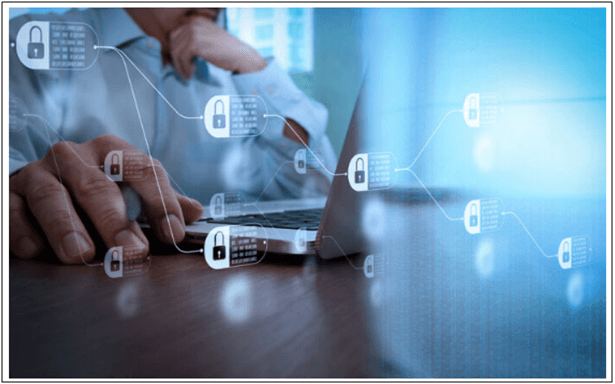Procurement can be a complex process. It involves the start of managing the supply chain, from sourcing, purchasing, negotiating, risk management, and inventory control. The entire process can be made simpler by digitizing it. Digital procurement enhances many areas such as the organization’s product quality, cost, and delivery. Simultaneously, it enables innovation and reduces risk. The lines between suppliers, customers, and other stakeholders are blurred as global supply chains become more intricated and intertwined. Companies have a wide range of competitive advantages with digital procurement technologies. This article discusses several technologies for implementing digital procurement, such as Procure-to-Pay (P2P) Technology.
Table of Contents
Analytic Tools for Spend Visibility
The spend visibility tool analyzes an organization’s information that includes daily operation information and transactions. An organization focuses more on sales revenue than expenses to ensure smooth operation. It also resulted in a missed opportunity to raise project profit margins. With this tool, users can view and check where funds flowing into a project could be better used to increase profitability.
One of the tool functions is to evaluate information and identify gray areas to enhance supplier relationships. It also will work out with the potential vendor that offers the most competitive value or package include prices, operations, and more. It can also help with inventory planning and management by analyzing real-time data from multiple sources within the company and benefiting from economies of scale.
Procure-to-Pay (P2P) Technology
P2P (procure-to-pay) is a coordinated and incorporated procedure for meeting a company’s requirement for goods in a timely and cost-effective manner. The stages are from identification to invoice approval and payment to the provider. The first step is to identify and define the requirements with the support of cross-functional stakeholders. Follow by forwarding requisitions to relevant providers, where the stakeholders review the providers’ quotations. Vendors receive purchase orders approved. The buyer inspects and examines through the delivery order on the supplied services or goods. This is to verify that the vendor fulfils the contract terms when the provider delivers the promised services or goods. The provider’s performance is marked using the historical record in the ERP system. Pay-as-you-go (PAYG) software is a component of the procure-to-pay cycle. It enhances supplier engagement, optimizes the inventory, and streamlines contract management by maintaining openness throughout the process.It records most of the transaction details, including commodity certification. It acts as a secured transaction between the provider and buyer to prevent external interference.

Blockchain Technology
Companies have used Blockchain technology in invoicing and payment where any invoice or payment transaction must be reviewed and approved by the participants. Any change to the invoice statement made by a single user, for any reason, would have to be reviewed again (as a new block) and approved by all network users. It is for fraud security.Blockchain could help safeguard data against unauthorized access or disguised changes in contract administration and vendor data management. As their supplier network and payment systems expand across platforms, large companies like Asus are subject to new fraudulent operations.Moreover, well-known industrialized organizations like Renault, where blockchain takes on the role of security in transactional and operational security. Developers are creating other functions like the traceability of components’ location.

Robotic Process Automation (RPA)
RPA is a novel technology that uses industrial data, logic and operationally structured information to automate individual industry activities. It decodes and retrieves applications to handle, understand, respond to input, and communicate with relevant digital systems.The individual buyer will process the user’s request and generate a purchase order manually in the traditional manner. As a result, errors like typo errors will occur within the purchase order. With the help of RPA, the error likelihood occurring will be reduced and managed in a fast-paced manner. It also aids the organization’s daily operation matters such as receiving goods, processing invoices, packing delivery packages.

Cloud Technology
New technology has brought in a new era of procurement. It allows communication and collaboration to reach a new height in procurement. It aids in keeping operational costs under control, selecting the most competitive vendor, enhancing the current company policy, document control, and assessing vendor risk management. The total quantity of manual transaction throughput over the whole procure-to-pay cycle has improved as a result.
The full content is only visible to SIPMM members
Already a member? Please Login to continue reading.
References
Dwarakanath Malekar, GDPSCM. (2021). “Key Technologies for Implementing Digital Procurement”. Retrieved from SIPMM: https://publication.sipmm.edu.sg/key-technologies-implementing-digital-procurement/,accessed 29/11/2021.
IDG Connect. (2017). “What does Blockchain Technology mean for the Procurement Industry?”. Retrieved from: http://www.idgconnect.com,accessed 27/11/2021.
Jo Tan Ling Ling, ADPSM. (2021). “Digital Technologies for Major Procurement Projects”. Retrieved from SIPMM: Digital Technologies for Major Procurement Projects | SIPMM Publications, accessed 29/11/2021.
Kelly Ho Lay Tin, SDDP.(2021). “Digital Technologies for Efficient Procurement”. Retrieved from SIPMM: https://publication.sipmm.edu.sg/digital-technologies-efficient-procurement/,accessed 29/11/2021
Ma Hwee Na, DPSM.(2018). “Adopting New Technologies for Effective Procurement”. Retrieved from SIPMM:https://publication.sipmm.edu.sg/adopting-new-technologies-effective-procurement/,accessed 27/11/2021.
Pactum, (2021). “Pactum, the creator of autonomous negotiation technology”. Retrieved from https://www.prnewswire.com/news-releases/pactum-the-creator-of-autonomous-negotiation-technology-wins-the-prestigious-digital-procurement-world-2021-startup-competition-301380429.html , accessed 30/11/2021.
Sievo.(2020).“Spend Analysis 101 | Comprehensive Guide for Beginners”. Retrieved from https://sievo.com/resources/spend-analysis-101?_sm_au_=iVVDH11VHM4L6NFFMTCVjK7R2J3TF, accessed 27/11/2021.

